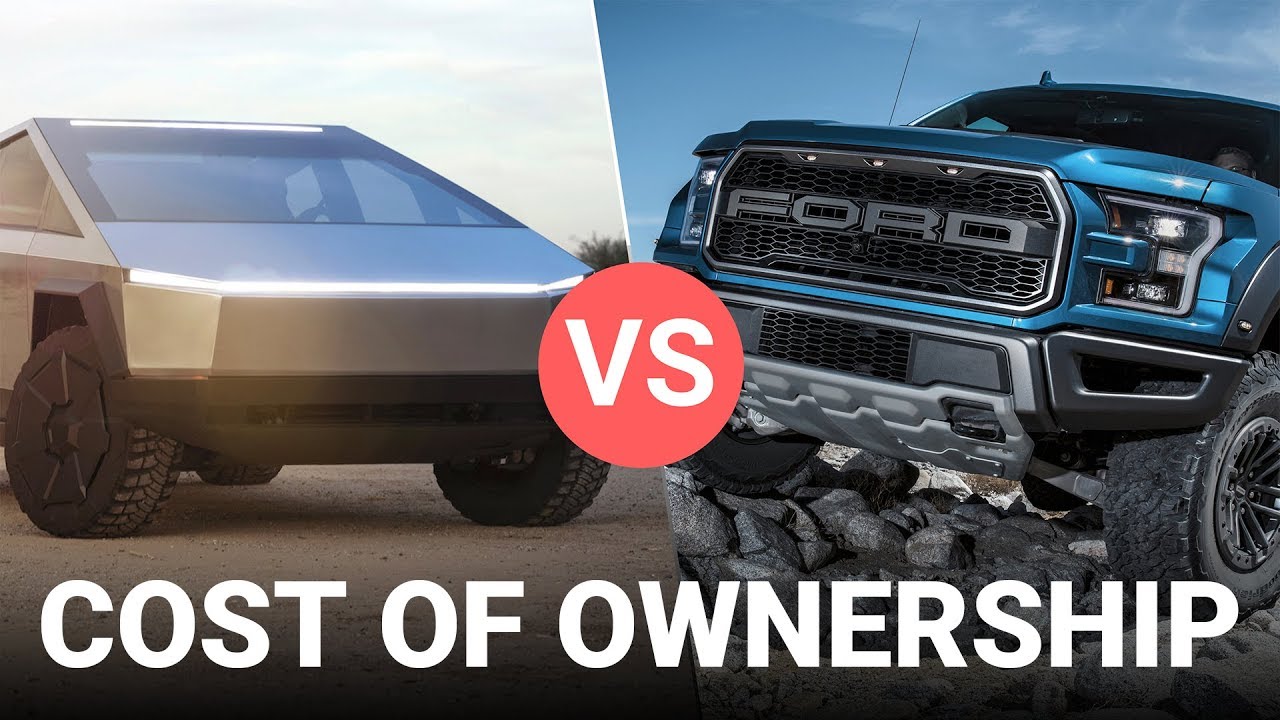
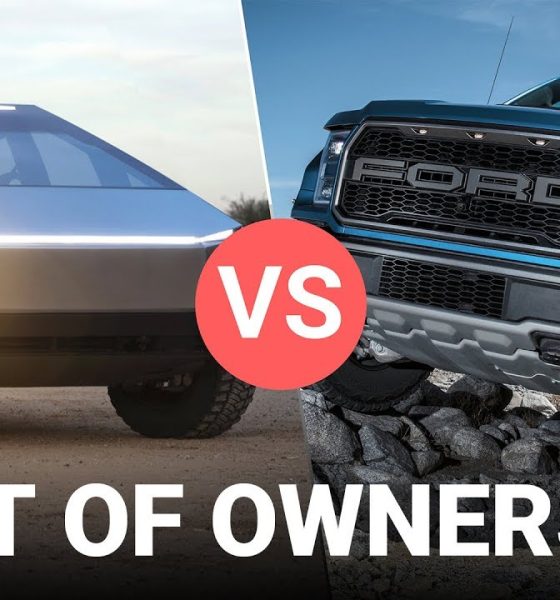
News
Tesla Cybertruck vs Ford F-150: Cost of ownership battle ends with eye-opening results
The Tesla Cybertruck offers several benefits that make it an ideal alternative to conventional pickup trucks like the best-selling Ford F-150. But beyond its polarizing design and healthy set of features, one thing may really be the difference-maker for customers who are considering a Cybertruck purchase: its cost of ownership.
Pickups are very popular in the United States, holding about 17% of the US auto sales market last year. Yet, for all their popularity, trucks are also notoriously expensive to own, thanks to their large engines that guzzle fuel. Considering that the Tesla Cybertruck promises a lower cost of ownership compared to traditional trucks like the Ford F-150, it then becomes pertinent to run the numbers between the futuristic upstart and the tried-and-tested veteran.
This was the topic of a recent video from Tesla owner-enthusiast Ben Sullins of YouTube’s Teslanomics channel. In his video, Sullins compared the cost of ownership between the Tesla Cybertruck and the Ford F-150 over a five-year period. The results were notably eye-opening.
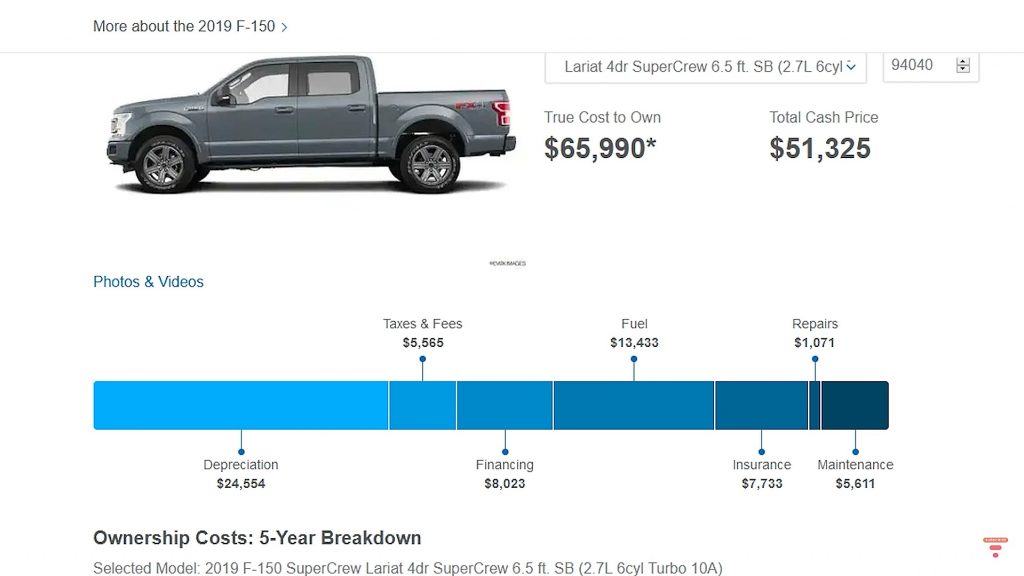
Sullins opted to utilize the Ford F-150 because it is the most popular pickup in the United States. He also selected the 2020 Ford F-150 Lariat SuperCrew as the truck of choice for his comparison, since the variant was the trim which received Edmunds‘ recommendation. This version was compared with the Tesla Cybertruck’s Dual Motor AWD variant, which CEO Elon Musk noted was receiving the majority of reservations from consumers. To make the comparison as fair as possible, Sullins opted for options in the F-150 that would make it as similar to the mid-level Cybertruck as possible, such as 4×4 and a six-seat configuration.
For the vehicle’s true cost of ownership over 5 years, the Teslanomics host referred to Edmunds‘ TCO metrics, which includes Depreciation, Taxes and Fees, Financing, Fuel, Insurance, Repairs, and Maintenance. Considering that the Cybertruck is not on the road yet, Sullins opted to estimate the all-electric pickup’s depreciation, taxes and fees, and financing on the F-150’s numbers. The same was true for the Cybertruck’s estimated insurance costs.
Things started to diverge when maintenance and fuel costs between the two vehicles were considered. The Tesla Cybertruck’s maintenance will likely be marginal compared to the F-150, which is equipped with an internal combustion engine. Fuel costs were also very different between the two vehicles. If one were to consider the average price of fuel in CA and TX and a yearly mileage of 15,000 miles, a Ford F-150 owner in CA could spend about $3,183 in fuel costs per year considering the state’s average fuel cost of $3.82 per gallon. An F-150 owner in TX, where gas prices average $2.24 per gallon, could spend about $1,866 per year in fuel costs.
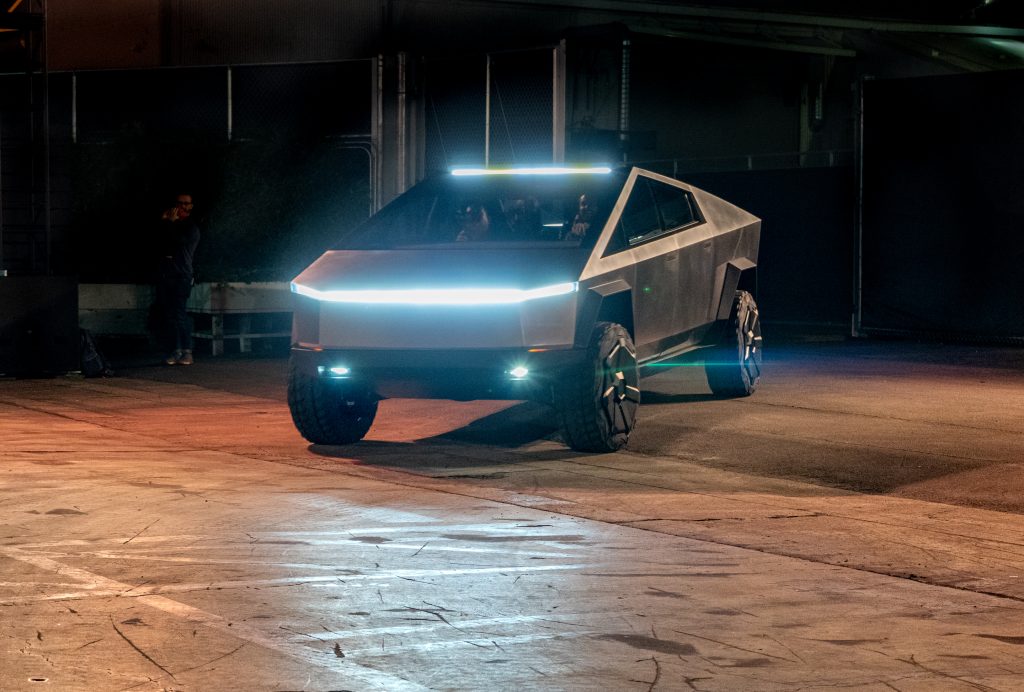
In comparison, a Cybertruck owner in CA, where electricity costs a pretty steep $0.26 per kWh on average, will spend about $1,950 in charging costs for a year. A Cybertruck owner from TX, where electricity costs $0.09 per kWh, could spend as little as $675 per year. It’s pertinent to note that these costs do not account for off-peak hours, where electricity is cheaper.
Overall, Sullins estimated that the total cost of ownership for a Ford F-150 in CA would be around $72,459 over five years, while one in TX stands at about $65,467. Thanks to low charging and maintenance costs, the Cybertruck would likely have a TCO of $53,379 in CA and $46,610 in TX, respectively. That’s a difference of $19,080 and $18,858 over the course of five years. Of course, if a Tesla owner charges the Cybertruck through solar panels, then the TCO of the all-electric vehicle will be even lower.
Inasmuch as the Cybertruck is polarizing for its looks, it is difficult not to see the value of the vehicle when it comes to cost of ownership compared to traditional pickups. This is something that is key to potential Cybertruck customers such as companies that are managing fleets of vehicles. If something like the Cybertruck comes along and offers the same utility and better performance while offering lower operating costs, there is very little incentive to ignore the vehicle just because it doesn’t look like every other pickup in the market.
Watch Ben Sullins’ breakdown of the Tesla Cybertruck and the Ford F-150’s cost of ownership in the video below.

Elon Musk
Tesla CEO Elon Musk sends rivals dire warning about Full Self-Driving
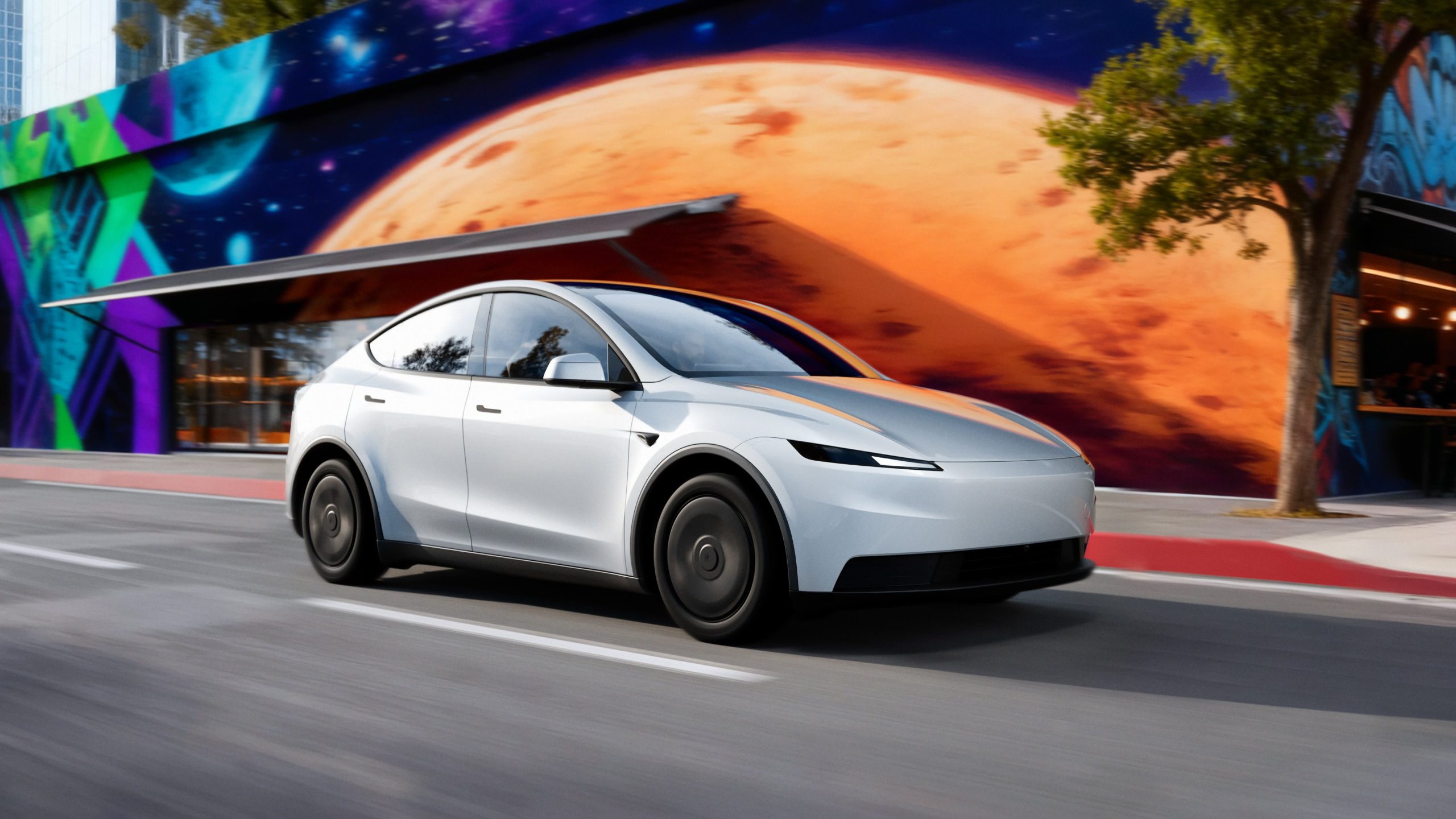
Tesla CEO Elon Musk revealed today on the social media platform X that legacy automakers, such as Ford, General Motors, and Stellantis, do not want to license the company’s Full Self-Driving suite, at least not without a long list of their own terms.
“I’ve tried to warn them and even offered to license Tesla FSD, but they don’t want it! Crazy,” Musk said on X. “When legacy auto does occasionally reach out, they tepidly discuss implementing FSD for a tiny program in 5 years with unworkable requirements for Tesla, so pointless.”
I’ve tried to warn them and even offered to license Tesla FSD, but they don’t want it! Crazy …
When legacy auto does occasionally reach out, they tepidly discuss implementing FSD for a tiny program in 5 years with unworkable requirements for Tesla, so pointless. 🤷♂️
🦕 🦕
— Elon Musk (@elonmusk) November 24, 2025
Musk made the remark in response to a note we wrote about earlier today from Melius Research, in which analyst Rob Wertheimer said, “Our point is not that Tesla is at risk, it’s that everybody else is,” in terms of autonomy and self-driving development.
Wertheimer believes there are hundreds of billions of dollars in value headed toward Tesla’s way because of its prowess with FSD.
A few years ago, Musk first remarked that Tesla was in early talks with one legacy automaker regarding licensing Full Self-Driving for its vehicles. Tesla never confirmed which company it was, but given Musk’s ongoing talks with Ford CEO Jim Farley at the time, it seemed the Detroit-based automaker was the likely suspect.
Tesla’s Elon Musk reiterates FSD licensing offer for other automakers
Ford has been perhaps the most aggressive legacy automaker in terms of its EV efforts, but it recently scaled back its electric offensive due to profitability issues and weak demand. It simply was not making enough vehicles, nor selling the volume needed to turn a profit.
Musk truly believes that many of the companies that turn their backs on FSD now will suffer in the future, especially considering the increased chance it could be a parallel to what has happened with EV efforts for many of these companies.
Unfortunately, they got started too late and are now playing catch-up with Tesla, XPeng, BYD, and the other dominating forces in EVs across the globe.
News
Tesla backtracks on strange Nav feature after numerous complaints

Tesla is backtracking on a strange adjustment it made to its in-car Navigation feature after numerous complaints from owners convinced the company to make a change.
Tesla’s in-car Navigation is catered to its vehicles, as it routes Supercharging stops and preps your vehicle for charging with preconditioning. It is also very intuitive, and features other things like weather radar and a detailed map outlining points of interest.
However, a recent change to the Navigation by Tesla did not go unnoticed, and owners were really upset about it.
For trips that required multiple Supercharger stops, Tesla decided to implement a naming change, which did not show the city or state of each charging stop. Instead, it just showed the business where the Supercharger was located, giving many owners an unwelcome surprise.
However, Tesla’s Director of Supercharging, Max de Zegher, admitted the update was a “big mistake on our end,” and made a change that rolled out within 24 hours:
The naming change should have happened at once, instead of in 2 sequential steps. That was a big miss on our end. We do listen to the community and we do course-correct fast. The accelerated fix rolled out last night. The Tesla App is updated and most in-car touchscreens should…
— Max (@MdeZegher) November 20, 2025
The lack of a name for the city where a Supercharging stop would be made caused some confusion for owners in the short term. Some drivers argued that it was more difficult to make stops at some familiar locations that were special to them. Others were not too keen on not knowing where they were going to be along their trip.
Tesla was quick to scramble to resolve this issue, and it did a great job of rolling it out in an expedited manner, as de Zegher said that most in-car touch screens would notice the fix within one day of the change being rolled out.
Additionally, there will be even more improvements in December, as Tesla plans to show the common name/amenity below the site name as well, which will give people a better idea of what to expect when they arrive at a Supercharger.
News
Dutch regulator RDW confirms Tesla FSD February 2026 target
The regulator emphasized that safety, not public pressure, will decide whether FSD receives authorization for use in Europe.
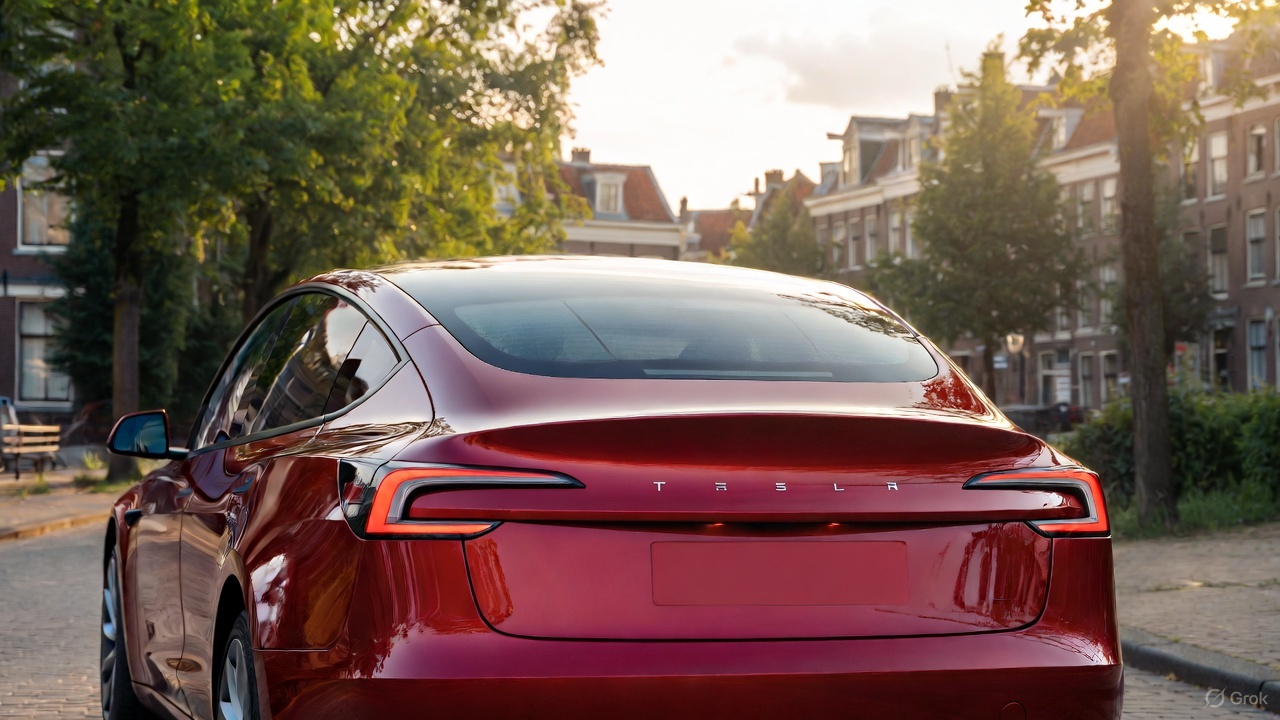
The Dutch vehicle authority RDW responded to Tesla’s recent updates about its efforts to bring Full Self-Driving (Supervised) in Europe, confirming that February 2026 remains the target month for Tesla to demonstrate regulatory compliance.
While acknowledging the tentative schedule with Tesla, the regulator emphasized that safety, not public pressure, will decide whether FSD receives authorization for use in Europe.
RDW confirms 2026 target, warns Feb 2026 timeline is not guaranteed
In its response, which was posted on its official website, the RDW clarified that it does not disclose details about ongoing manufacturer applications due to competitive sensitivity. However, the agency confirmed that both parties have agreed on a February 2026 window during which Tesla is expected to show that FSD (Supervised) can meet required safety and compliance standards. Whether Tesla can satisfy those conditions within the timeline “remains to be seen,” RDW added.
RDW also directly addressed Tesla’s social media request encouraging drivers to contact the regulator to express support. While thanking those who already reached out, RDW asked the public to stop contacting them, noting these messages burden customer-service resources and have no influence on the approval process.
“In the message on X, Tesla calls on Tesla drivers to thank the RDW and to express their enthusiasm about this planning to us by contacting us. We thank everyone who has already done so, and would like to ask everyone not to contact us about this. It takes up unnecessary time for our customer service. Moreover, this will have no influence on whether or not the planning is met,” the RDW wrote.
The RDW shares insights on EU approval requirements
The RDW further outlined how new technology enters the European market when no existing legislation directly covers it. Under EU Regulation 2018/858, a manufacturer may seek an exemption for unregulated features such as advanced driver assistance systems. The process requires a Member State, in this case the Netherlands, to submit a formal request to the European Commission on the manufacturer’s behalf.
Approval then moves to a committee vote. A majority in favor would grant EU-wide authorization, allowing the technology across all Member States. If the vote fails, the exemption is valid only within the Netherlands, and individual countries must decide whether to accept it independently.
Before any exemption request can be filed, Tesla must complete a comprehensive type-approval process with the RDW, including controlled on-road testing. Provided that FSD Supervised passes these regulatory evaluations, the exemption could be submitted for broader EU consideration.








